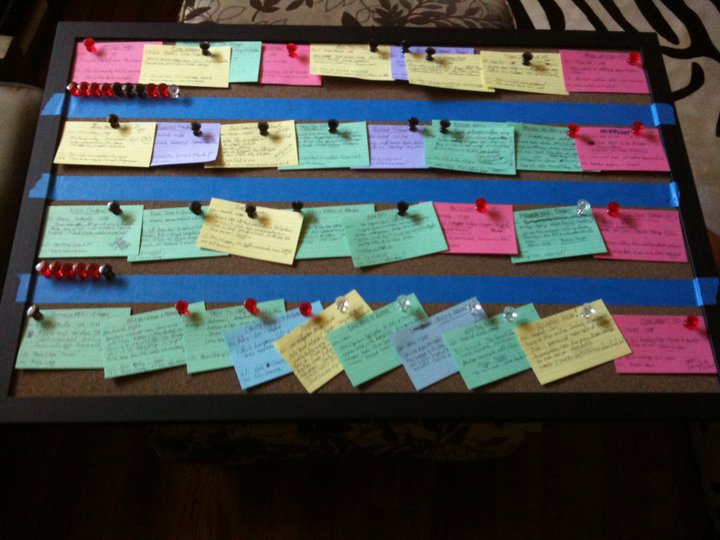Everyone Needs a Map
Another long gap between posts, but this time for good reason: we moved into our new home and spent the last week getting unpacked and settled. Moving in and then closing on our old home is such a huge relief.
Given all our moving activities, I haven't been good about settling back into my reading habit. But I forced myself to pick up Save the Cat! once again and found a few inspiring tidbits.
First, having a map makes everyone better. This relates to what author Blake Snyder calls "The Board." It is a visual tool for planning a script. Just 4 horiztinal sections stacked atop one another with note cards, sticky notes, or hand-drawn boxes labeling important sections of the story.
This is extremely similar to Jeff Patton's model of a story map, though the story map can be any number of rows or columns.


Next: an example of user story map (source: Mal Sanders, Medium)
The takeaway here is that everyone needs a map. Sure, you could start writing or designing or coding, but how do you know when you are done? And how do you know those ideas that seem good in your head aren't impractical darlings that won't force you to rework your plan midway through?
There is a popular idea in UX that the fidelity of your design should match the fidelity of feedback you need. If you are starting with a rough concept, a rough prototype or even simple sketches are enough to get the point across and uncover issues.
I liken this to something I call lazy designing. It's lazy in that you should only do the maximum amount of work necessary to collect answers to questions that prevent you from doing more.
However, both the Board and a story map are fantastic visual aides that ensure multiple people are in aligned in their understanding. Don't let concepts live in other people's heads – not even your own. Get them out visually so everyone can see and react to the same thing.
The Board is a way for you to "see" your movie before you start writing. It is a way to easily test different scenes, story arcs, ideas, bits of dialog and story rythms, and decide whether they work — or if they just plain suck.
Links
- Top 5 takeaways from User Story Mapping: Mentioned above, this is a summary of User Story Mapping, highlighting a few key concepts.
- Here there be dragons? I came across a 2-by-2 prioritization graphic that playfully used this phrase, and I was curious about its origin
- Conceptual versus visual fidelity: And here is a link to that 2-by-2 graphic.
- Why are brands scared of standing out?: An interesting read backed up by psychology about companies taking control of their brand story.